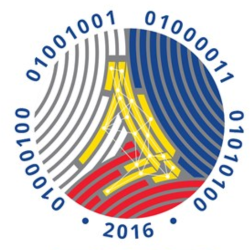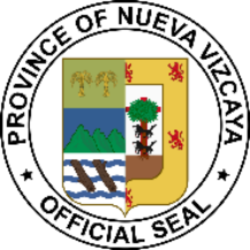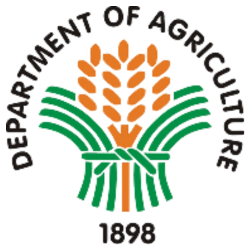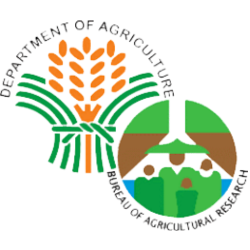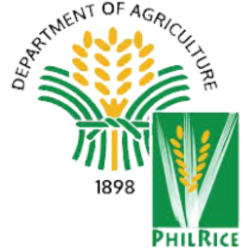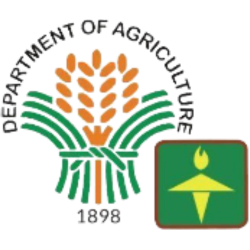Influence of Climate Change on Prevalence of Livestock Diseases in Cagayan Valley
The study was conducted to determine the influence of climate change on prevalence of livestock diseases in Cagayan Valley from 2009 to 2012. Four provinces - Cagayan, Isabela, Quirino and Nueva Vizcaya - were selected as study sites. Batanes was not included because of its remote location and being a low-risk area. Sources of data were the Regional Animal Disease Diagnostic Laboratory, Provincial Veterinary Offices, Bureau of Agricultural Statistics and ISU-PAGASA Agromet Station.
Prevalent livestock diseases were Hemorrhagic septicemia, Ephemeral fever, Surra, Fascioliasis and Swine enzootic pneumonia. Fascioliasis was the most prevalent with an annual average prevalence of 8.82 per 10,000 animal population.
Diseases common during the rainy season were Hemorrhagic septicemia, Ephemeral fever, Surra, Fascioliasis and Swine enzootic pneumonia. Surra, Fascioliasis and Swine enzootic pneumonia were commonly observed during the dry season. Disease cases during dry season were far lower compared to rainy season. There was a significant (0.05 level) correlation between temperature and Fascioliasis prevalence, and a highly significant (0.01 level) correlation between rainfall and Surra prevalence.
No new disease emerged during the conduct of study. All the diseases identified in Cagayan Valley were endemic or constantly occurring.
Keywords: impact, climate change, prevalence, diseases
Citation (APA): Corbe, R. C. & Gaffud, O. M. (2015). Influence of Climate Change on Prevalence of Livestock Diseases in Cagayan Valley. NVSU Research Journal, 2(1), 5-14.
Impact of the College of Arts and Sciences Mathematics Tutorial Extension Program Among the Grade Six Pupils in a Public Elementary School in the Division of Nueva Vizcaya
The study aimed to evaluate the effectiveness of the seven-year old mathematics tutorial extension program of the College of Arts and Sciences (CAS). This was conducted in Bayombong West Elementary School (BWES), Nueva Vizcaya. The program started in 2006 in response to the mandate of the Nueva Vizcaya State University to expand its services by conducting extension work in the community. Primary data were collected from cooperating teachers, former and current principals, 114 pupil - clienteles and 10 randomly selected parents of the pupilrespondents. Secondary data were obtained from the BWES records and CAS Extension’s records. Data were analyzed using descriptive statistics. Results revealed that the pupils’ attendance to the program improved their academic performance in the National Assessment Test (NAT). Positive changes in the pupils’ attitude and confidence level towards mathematics were also observed. Hence, the mathematics tutorial program of the CAS, in support to the regular classroom instruction, exhibited positive impact to grade six pupils in improving their academic performance and in imbibing positive attitude towards mathematics. The best practices of the program such as solving puzzles, quiz games and simulation examinations are highly recommended for use by other schools in order to improve pupils’ academic performance and attitude towards mathematics.
Keywords: impact, climate change, prevalence, diseases
Citation (APA): Valderama, J. S. (2015). Impact of the College of Arts and Sciences Mathematics tutorial extension program among the grade six pupils in a elementary school in the division of Nueva Vizcaya. NVSU Research Journal, 2(1), 15-21.
Evaluation of the Performance of Isabela State University Accountancy Graduates in the Cpa Board Examination
The study was conducted to evaluate the performance of Isabela State University (ISU) BS Accountancy graduates in the CPA Board Examinations. ISU performance exceeded the national levels in 2007, 2009 and 2011-2014.
There were 73 respondents (41 male and 32 female) of which 80.82% passed the CPA Board Examination. Most of the 60.27% were able to pass the examination with one take. The performance in the CPA Board exam is significantly associated with gender of respondents and education of parents. It is also significantly associated with grades in eight subjects: 1)Fundamentals of Accounting II; 2) Sales, Agency, Labor and Other Commercial Laws; 3) Financial Accounting and Reporting I; 4) Financial Accounting and Reporting II; 5) Cost Accounting; 6) Advanced Accounting I; 7) Advanced Accounting III; and 8) Management Accounting I.
A passing performance in the CPA board exam with one take may be attained if the grades of the student are: a) 1.0 in Financial Accounting and Reporting I; b) 1.25 or better in Sales, Agency, Labor and Other Commercial Laws; c) 1.5 or above in Advanced Accounting III; d) 1.75 or better in Financial Accounting and Reporting II, Cost Accounting and Advanced Accounting I; and e) 2.0 or above in Management Accounting I.
The top three most difficult daunting subjects in the Board Examination were Auditing Theory, Business Law and Taxation, and Practical Accounting II. Problems met while reviewing included insufficiency of funds, low confidence levels and too many topics not discussed in the classroom.
Keywords: CPA, success factors, quality instruction
Citation (APA): Ramos, A. M. (2015). Evaluation of the performance of Isabela State University accountancy graduates in the CPA board examination. NVSU Research Journal, 2(1), 22-33.
Growth and Performance of Broiler Chickens Supplemented With Moringa Oleifera Tea
This study explored the potential of Moringa oleifera tea in enhancing the growth performance of broilers by evaluating the effect of varying concentration of moringa decoction given as a tea relative to their growth responses (final weight, total gain in weight and growth rate), cumulative feed consumption, feed conversion ratio and dressing percentage and determine which among the specified amount of leaves used for decoction could enhance the given performance parameters.
Following the Completely Randomized Design (CRD), 120-day-old broiler chicks per trial were randomly distributed to four (4) treatments with three (3) replications each. Treatments for moringa Tea decoction (weight by volume as grams fresh moringa leaves (FML) per liter of water) were: T1 (Control) with water soluble commercial vitamin – mineral supplement; T2: 25g FML; T3: 50g FML and T4: 75g FML. ANOVA (p-values) and Least Significant Difference (LSD) were used for data analysis. Broilers given moringa Tea decoction (Trial 1) significantly differed over T1 (Control) in final weight, total gain in body weight, feed conversion ratio and yielded insignificant dressing percentage (with and without giblets). Trial 2 revealed comparable results in the different performance parameters. The T3 (50g FML) in moringa Tea decoction gave the best results to broilers. Thus, moringa Tea can be used as an inexpensive and safe alternative nutrient supplement to enhance growth and performance of broiler chicken.
Keywords: Moringa, broiler chicken, growth, performance, Moringa tea decoction, Moringa tea powder, air-drying, sun-drying
Citation (APA): Manuel, J. A. (2015). Growth and performance of broiler chickens supplemented with Moringa oleifera tea. NVSU Research Journal, 2(1), 34-39.
Technical Efficiency of Pole Snap Bean (Phaseolus Vulgaris L.) Farmers in Nueva Vizcaya, Philippines
Productivity of pole snap bean farmers can be improved by adoption of better production technologies, or improvement of production efficiencies, or both. However, since producers of pole snap beans are marginal farmers on marginal lands, adoption of improved production technologies are very slow; hence, improvement in efficiency becomes the better option. This study determined efficiencies of pole snap bean farmers in Nueva Vizcaya, Philippines. Multistage random sampling was adopted with a total of 90 farmers interviewed. The stochastic production frontier was used to estimate technical efficiency. The Cobb-Douglas production function was applied since this function fits agricultural data well. Results revealed that pole snap bean production in Nueva Vizcaya is technically inefficient. Technical efficiency estimates showed that seed was significant at 10%, while fertilizer, insecticide, fungicide and herbicide were significant at 1%. This implies that the amount of seed, fertilizer, insecticide, fungicide and herbicide applied have significant effects on the production of pole snap beans. Improving technical efficiency of farmers, therefore, may result in better yield, lesser cost and higher net returns. Socioeconomic factors of farmers such as years of schooling and access to credit significantly influenced the farmers’ technical efficiency. Moreover, results showed that pole snap bean producers lack technical knowledge particularly on the use of commercial inputs. Government interventions, such as seminars and trainings, may then be necessary to improve efficiency of pole snap bean farmers. Farmers’ associations and cooperatives may be of help for farmers to have access to formal credit.
Keywords: technical efficiency, pole snap bean production
Citation (APA): Sarmiento, G. P. (2015). Technical efficiency of pole snap bean (Phaseolus vulgaris L.) farmers in Nueva Vizcaya, Philippines. NVSU Research Journal, 2(1), 40-45.
Bioavailability Shift of Heavy Metals in Vermicomposting: Investigating a Potential Approach to Climate Change Mitigation
Organic wastes if properly recycled can mitigate greenhouse gas emissions. Using it as soil amendment through vermicomposting must cover an understanding on the behavior of pollutants, such as heavy metals, in the process. The study aimed to identify the bioavailability shift of Pb, Cr, Ni, Cu and Zn during vermicomposting of combined farm wastes (crop residue + spent mushroom substrate + cow manure) using the Tessier sequential extraction procedure to extract the exchangeable and carbon-bound metal fractions. Concentrations of heavy metals in the substrates before and after vermicomposting, growth performance and heavy metal bioaccumulation of Eisenia fetida in three cycles of 45 days each were also studied. Test results revealed an increase in bioavailability for Cu (43.85%), Zn (40.76%) and Ni (16.34%); while bioavailability of Cr and Pb decreased by 12.97% and 1.43% after vermicomposting. Resulting vermicompost assessments showed a significant reduction in the concentration of metals, Zn (40.21 - 49.45%), Ni (20.89 - 54.05%), Cu (27.76 - 53.54%), Cr (9.71 - 22.03%), and Pb (1.97 - 32.93%). Analysis of metal concentrations in earthworms revealed a considerable bioaccumulation of heavy metals in their bodies. Overall, the increase in the bioavailability of some heavy metals was compensated by the reduction of the total heavy metal concentrations in the resulting vermicompost, rendering the concentrations of bioavailable heavy metal fractions lower than their initial values.
Keywords: Eisenia fetida, farm waste, heavy metal bioavailability, vermicomposting
Citation (APA): Caranza, J. Q. (2015). Bioavailability shift of heavy metals in vermicomposting: Investigating a potential approach to climate change mitigation. NVSU Research Journal, 2(1), 46-54.



















